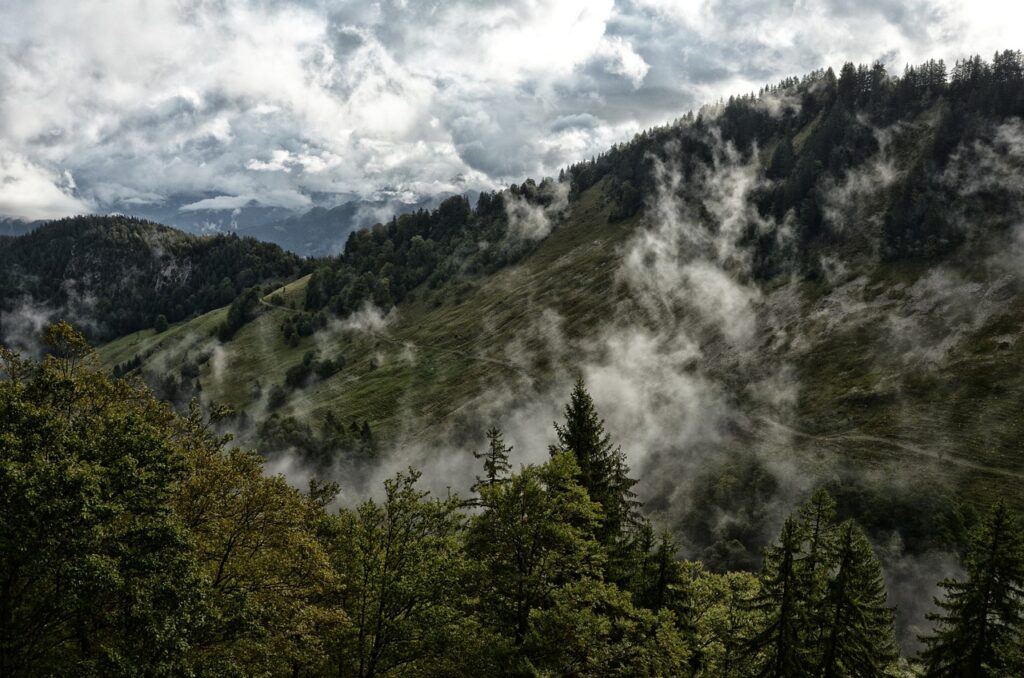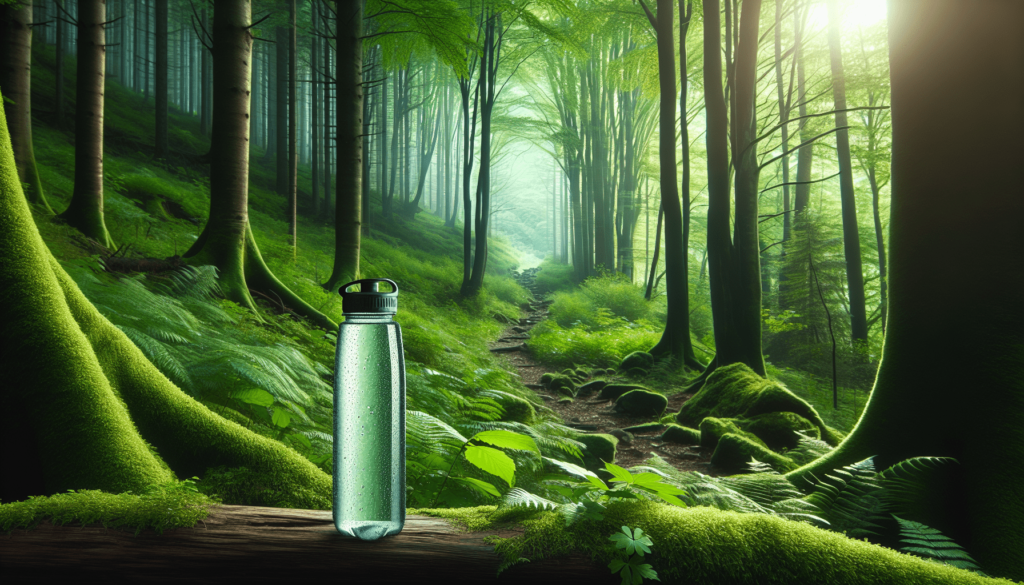Have you ever found yourself feeling thirsty and worn out while out on a hiking adventure? Staying properly hydrated is essential to ensure you have an enjoyable and successful hike. In this article, you will discover simple and effective tips on how to stay hydrated while hiking, so you can continue exploring the great outdoors without feeling fatigued. So lace up your hiking boots, grab your water bottle, and let’s hit the trails together! How do I stay hydrated while hiking?

Importance of Hydration
Staying hydrated is crucial while hiking because dehydration can lead to fatigue, dizziness, and even dangerous situations. It’s essential to drink enough fluids to maintain your energy levels and overall well-being on the trail.
Hydration is key to enjoying your hike to the fullest! By staying properly hydrated, you’ll be able to tackle longer distances, withstand challenging terrain, and prevent potential health risks.
Signs of Dehydration
Recognizing the signs of dehydration is vital for your safety while hiking. Symptoms include dry mouth, fatigue, dizziness, dark urine, and decreased urine output. If you experience any of these signs, it’s essential to replenish your fluids immediately.
Dehydration can sneak up on you, so it’s crucial to listen to your body and pay attention to any warning signs. By staying vigilant and addressing dehydration early, you can avoid more severe complications later on.
Hydration Strategies
There are various strategies you can implement to help you stay hydrated while hiking. From pre-hike preparation to on-trail practices, these tips will ensure you maintain optimal hydration levels throughout your adventure.
Hydration strategies are your best ally when it comes to staying energized and healthy during your hikes. By incorporating these practices into your routine, you’ll set yourself up for success on the trail.
Pre-Hike Preparation
Before hitting the trail, make sure you start your hike well-hydrated. Drink plenty of fluids the day before your hike and continue hydrating leading up to the start of your journey. Avoid excessive caffeine and alcohol consumption, as they can dehydrate your body.
Pre-hike preparation is crucial for maintaining hydration levels throughout your adventure. By starting your hike with a well-hydrated body, you’ll be better equipped to cope with the physical demands of the trail.
Hydration Packs vs. Water Bottles
When it comes to carrying water on the trail, you have two primary options: hydration packs (such as Camelbaks) and water bottles. Hydration packs offer hands-free convenience and easy access to water, while water bottles are more straightforward to refill and monitor your water intake.
Choosing between hydration packs and water bottles is a personal preference that depends on your hiking style and preferences. Consider the length of your hike, the climate, and your comfort level with each option when deciding how to carry your water.
Electrolyte Supplements
Electrolyte supplements can help replenish essential minerals lost through sweating while hiking. Look for electrolyte tablets or powders that you can add to your water to maintain a proper balance of sodium, potassium, magnesium, and other electrolytes.
Electrolyte supplements are a valuable addition to your hydration strategy, especially during strenuous hikes or in hot climates. By replenishing electrolytes, you can prevent muscle cramps, fatigue, and other symptoms of electrolyte imbalance.

Water Consumption Tips
Knowing how much water to drink and when to drink it is essential for optimal hydration while hiking. These water consumption tips will help you stay on track and avoid dehydration during your outdoor adventures.
Water consumption tips are your roadmap to proper hydration on the trail. By following these guidelines, you’ll be able to maintain your energy levels and stay safe while exploring the great outdoors.
Drink Frequently
Make a habit of drinking water regularly throughout your hike, even if you don’t feel thirsty. Sipping small amounts of water at intervals is more effective than chugging large quantities at once. Aim to drink at least one liter of water per hour of hiking.
Drinking frequently is crucial for preventing dehydration and maintaining your energy levels on the trail. By staying ahead of your thirst and hydrating consistently, you’ll be able to tackle challenging terrain with ease.
Monitor Urine Output
Monitoring your urine output is a useful way to gauge your hydration levels while hiking. Aim for pale yellow urine, which indicates adequate hydration. Dark yellow urine is a sign of dehydration and requires immediate attention.
Keeping an eye on your urine output is a simple yet effective way to ensure you’re drinking enough water on the trail. By using this visual cue, you can track your hydration levels and adjust your water intake accordingly.
Snack on Hydrating Foods
In addition to drinking water, you can stay hydrated by snacking on foods with high water content, such as fruits and vegetables. Watermelon, cucumber, oranges, and celery are excellent choices for replenishing fluids and electrolytes while hiking.
Snacking on hydrating foods is a tasty way to support your hydration efforts on the trail. By including these water-rich snacks in your hiking menu, you’ll stay refreshed and energized throughout your adventure.

Hydration on Different Types of Hikes
Whether you’re embarking on a short day hike, a multi-day trek, or a challenging ascent, staying hydrated is essential for your safety and performance. Here are some hydration tips specific to different types of hikes to help you plan accordingly.
Hydration needs may vary depending on the type of hike you’re undertaking, so it’s crucial to adapt your hydration strategy to suit the demands of the trail. By tailoring your approach to different hiking scenarios, you’ll be better prepared for whatever challenges come your way.
Day Hikes
For shorter day hikes lasting a few hours, a hydration pack or water bottle should provide sufficient water for your needs. Consider carrying electrolyte supplements for additional hydration support and snacking on water-rich foods to stay refreshed.
Day hikes may require less water compared to longer treks, but proper hydration is still essential for your comfort and safety. By keeping your water intake steady and maintaining electrolyte balance, you’ll make the most of your day hike experience.
Multi-Day Treks
On multi-day treks, water availability may be limited, so it’s crucial to plan ahead and carry enough water to last between refills. Consider using a water filter or purifier to replenish your supply from natural sources along the trail.
Multi-day treks present unique hydration challenges, as you’ll need to carry water for extended periods between resupply points. By strategizing your water consumption and purification methods, you can stay hydrated and healthy throughout your multi-day adventure.
High-Altitude Hikes
When hiking at high altitudes, your body loses more water through respiration, making proper hydration even more critical. Drink water frequently, even if you don’t feel thirsty, to prevent altitude-related dehydration.
High-altitude hikes pose additional hydration challenges due to increased water loss through breathing. By adjusting your water consumption to account for altitude, you’ll be able to maintain optimal hydration levels and minimize the risk of altitude sickness.

Hydration Myths Debunked
There are many myths and misconceptions surrounding hydration, especially when it comes to outdoor activities like hiking. Let’s debunk some common hydration myths to set the record straight and help you make informed choices on the trail.
Hydration myths can lead to confusion and improper hydration practices, so it’s essential to separate fact from fiction. By understanding the truth behind these myths, you’ll be able to stay hydrated effectively and enjoy your hikes to the fullest.
Myth: Thirst is a Reliable Indicator of Hydration
Contrary to popular belief, relying solely on thirst to gauge your hydration levels can be risky, especially while hiking. By the time you feel thirsty, you may already be dehydrated. It’s crucial to drink water regularly, regardless of thirst cues.
Thirst is a late indicator of dehydration, so waiting until you feel thirsty to drink water is not the best strategy. By staying ahead of your thirst and hydrating proactively, you’ll maintain optimal hydration levels and prevent dehydration on the trail.
Myth: Clear Urine Means You’re Hydrated
While clear urine is often associated with good hydration, it can also be a sign of overhydration. Aim for pale yellow urine, as excessively clear urine may indicate that you’re flushing out essential electrolytes. Balance is key when it comes to urine color and hydration.
Clear urine isn’t always a reliable indicator of hydration, as it can also signal overhydration. By aiming for pale yellow urine, you’ll ensure a healthy balance of fluids and electrolytes in your body, supporting optimal hydration levels while hiking.

Conclusion
Staying hydrated while hiking is essential for your safety, performance, and enjoyment of the great outdoors. By following the tips and strategies outlined in this article, you’ll be well-equipped to maintain optimal hydration levels on the trail and make the most of your hiking adventures.
Remember, hydration is not just about drinking water – it’s also about replenishing electrolytes, snacking on hydrating foods, and adapting your hydration strategy to different types of hikes. By prioritizing hydration and listening to your body’s signals, you’ll ensure a comfortable and successful hiking experience every time. Enjoy your hikes, stay hydrated, and happy trails!